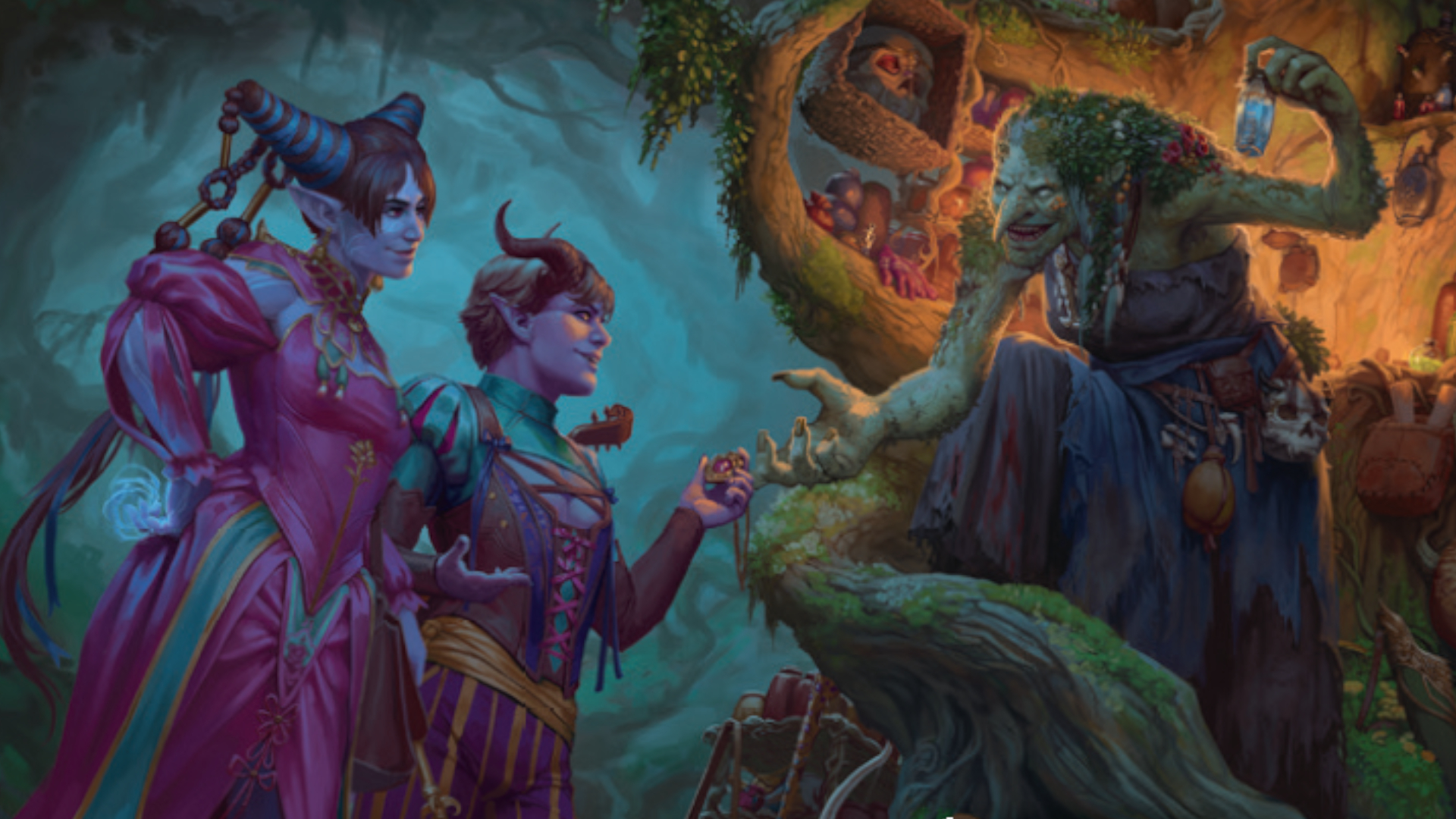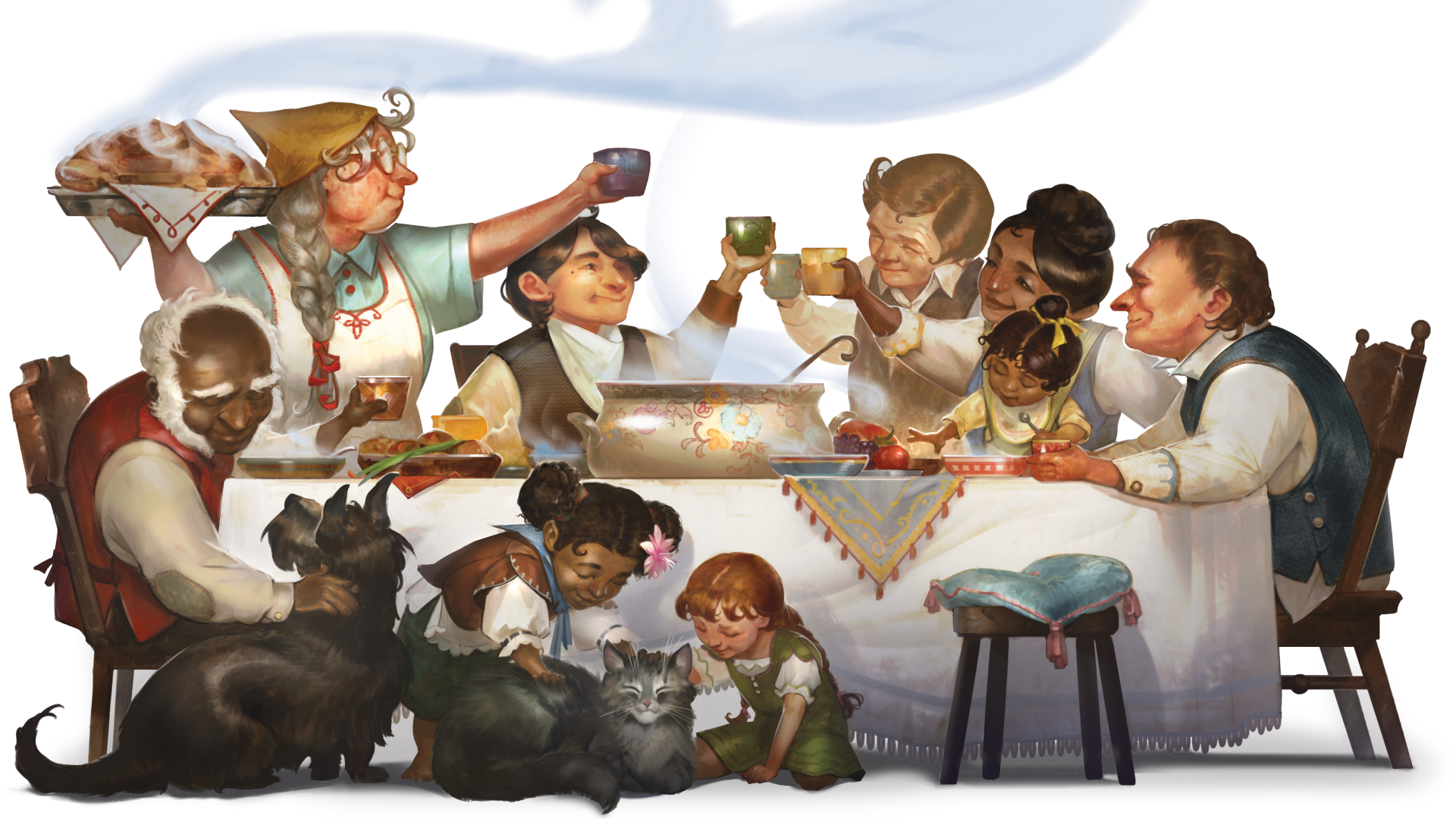
The 2024 rules revisions for D&D Fifth Edition (5E) comes alongside a fundamental rethink of how Dungeons & Dragons players make their characters in the bestselling roleplaying game.
We’ve known for a couple of years now that the D&D brand was moving away from the problematic term ‘race’ and embracing a more neutral ‘species’ for the many fantastical creatures – elves, dwarves, tieflings – that you can play in the game. And since 2020’s excellent supplement, Tasha’s Cauldron of Everything, players have been able to choose which ability scores (Strength, Intelligence, etc) get a boost from their choice of creature, so that orcs aren’t struck in stereotypes of dim, hulking brutes, and even gnomes have a chance at giving a dragon a black eye.
But the new Player’s Handbook, which got its own series of deep-dive video reveals this week on the official Dungeons & Dragons YouTube channel, goes one giant step further, flipping character creation in one of the best tabletop RPGs on its head. At the heart of that change is the Character Origin: what casual players might refer to as backstory.
In the 2014 Player’s Handbook, character backgrounds are something of an afterthought. They’re listed on page 127, long after you’ve made your way through a choice of races and classes, and consist of a small set of additional skills and proficiencies, maybe another language, alongside minor features – connections to nobility, an affinity with pirates, or more vaguely an epiphany only you have received – that at many tables might not even come up at all, depending on the setting and characters you encounter.
In the new Handbook, you’ll actually choose your class first, and then choose a character background before a species even rears its head – which entirely flips around the order from the 2014 sourcebooks. And there’s a much larger emphasis on what impact your background – your previous profession, location, and community – has on your abilities, rather than the type of species you are.
First, some background...
“Background has far more weight for your character than it did in the 2014 rules,” says lead rules designer Crawford. “In addition to giving you proficiencies, as backgrounds previously did, backgrounds also now give you a feat at level one. They also determine ability score bonuses for you when you create your character.”
Those ability score bonuses are quite different from what we saw in Tasha’s – or even the playtests last year, where backgrounds came with set ability score bonuses, something that Crawford says “hard-locked the backgrounds to specific classes [when] we wanted people to feel free to mix and match.”
Now, each background comes with a set of three scores you can share those bonuses between: whether you want to put 1 point in each score, or split 2/1 across two options. An Acolyte, for instance, can place points freely between Intelligence, Wisdom, and Charisma.

It’s also a big change from the ‘racial modifiers’ seen in the game previously – shifting the focus away from what elves might generally be good at, and towards what you’ve learned in the process of growing up and entering the world: “Not only what you did prior to becoming an adventurer, but where you did it. Were you a sailor, were you a criminal, were you an acolyte in a temple, were you a sage?”
From what glimpses of the Player’s Handbook we’ve seen, there’s a big emphasis on art as an entry point to imagining each option in the book. The backgrounds, which in the 2014 books have a small handful of character sketches, now are accompanied by a literal background: an image of a landscape or setting, a place to imagine your character living and working, like a circus tent or a port leading out to sea.
As teased by the Unearthed Arcana playtest last year, these 16 backgrounds offer what’s called an ‘origin feat’, which Crawford calls a good way for players to “sample” the feat system with a curated list of entry-level options. A level one feat is a semi-common ‘house rule’ for many D&D groups, helping to make low-level play feel more varied, and it’s encouraging to see designers make it an official part of the game – as with the option to use healing potions as a bonus action, which is a house rule enjoyed in the D&D actual play Critical Role (and my own campaign).
After choosing your background, you look even further back to the birth of your character, and what species they are. In the 2024 Handbook, gone are the ‘half’ races (half-elf, half-orc) and in their place are a handful of new fully-fledged options: the orc, the giant-descended goliath, and the celestial-inspired aasimar. And other species have been tweaked to lean more into their specific fantasies: dwarves having tremorsense to feel vibrations under the ground, orcs and dwarves having better low-light vision than other species, and dragonborn being able to sprout wings for short periods.
But while this is still broadly the D&D 5E we know and love, designers seem to have realized how important the character creation process really is, and found a way of putting a neglected system at the forefront of who you are, and how you’ll play the game.
The 2024 Player’s Handbook releases on September 17, 2024. You can pre-order it at D&D Beyond.
Looking for something to play before the Player's Handbook arrives? You can always try a 5e adventure, and we've listed our favorites in this roundup of the best D&D books. Alternatively, you can take a break with the best board games.







